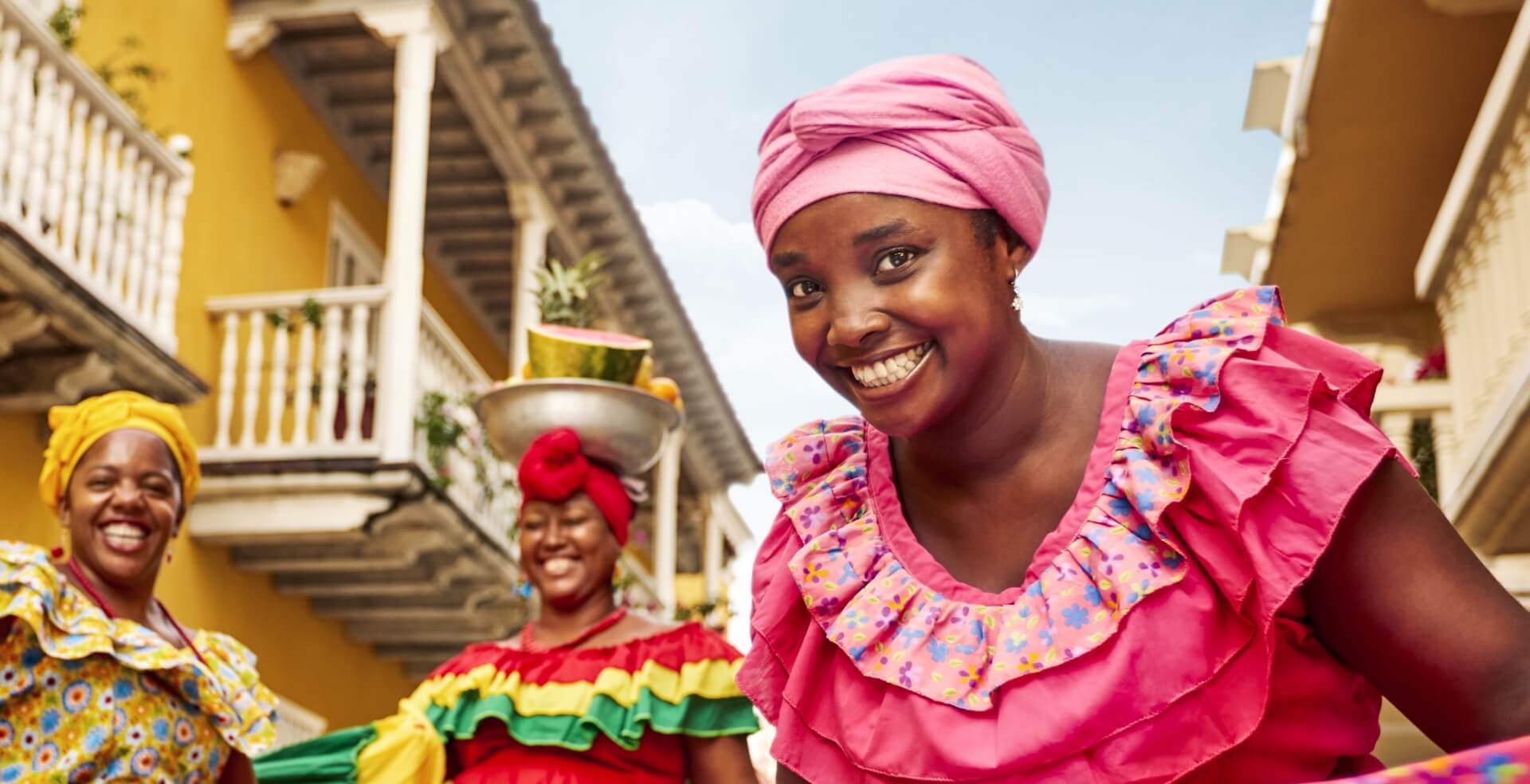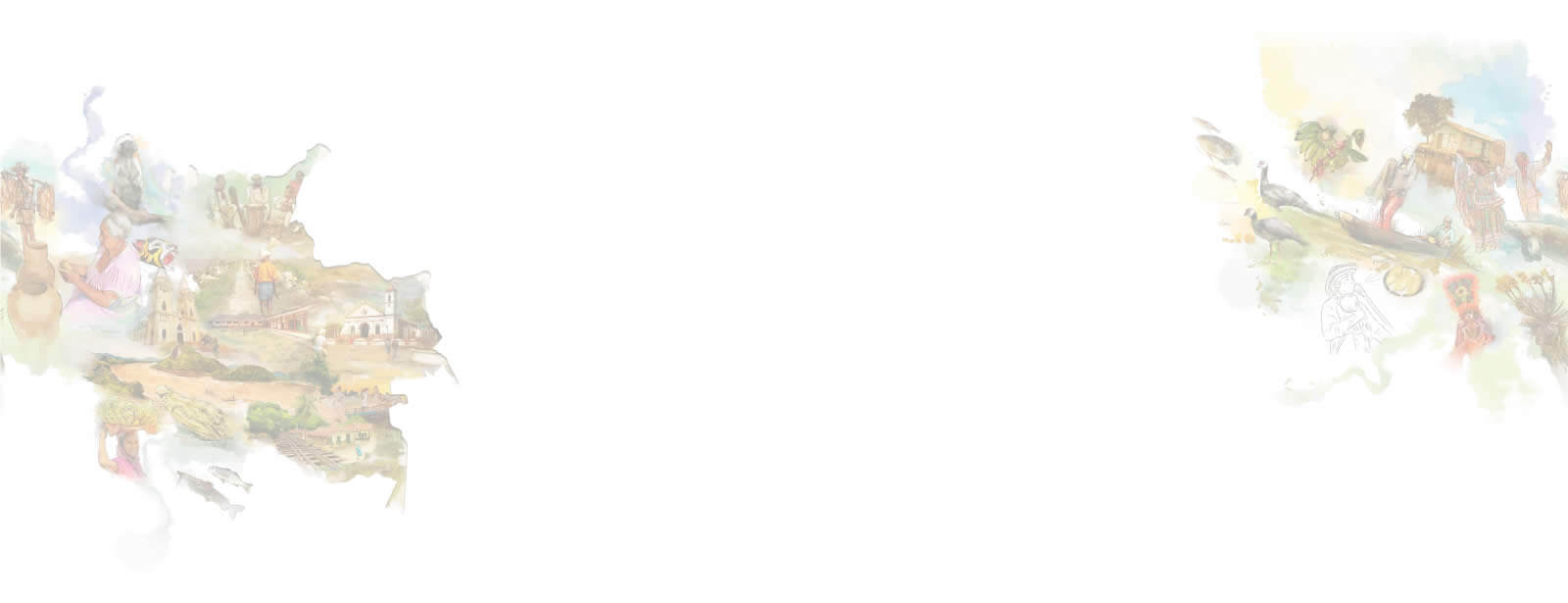One of Colombia’s most rewarding hikes is the multi-day trek through the jungle to reach the remains of the “Lost City” or Ciudad Perdida, in Spanish.
The Ciudad Perdida Archaeological Park, also known as Teyuna, offers rare insight into the daily lives of past indigenous communities in the region.
It is hidden deep within the Sierra Nevada de Santa Marta mountain range, which borders Colombia’s Caribbean coast, near Tayrona National Park and the coastal city of Santa Marta.
In the heart of the tropical forest, shielded by fifty-meter tall trees and on the banks of the Buritaca River, sits the imposing remains of the region’s famed Tairona empire.
The Lost City is easily recognizable for its splendid stone architecture and carefully-designed stepped terraces. It was once the thriving urban center of this powerful civilization, linking together its many communities along the coast.
Here we tell you everything you need to know about this special place.
You may also be interested in: Santa Marta: An Old Historical City Bathed by the Sea

Ciudad Perdida is one of the most wonderful places you can discover when visiting Santa Marta
What do we know about the Ciudad Perdida?
Ciudad Perdida was uncovered in 1975 by people digging informally in the region and later confirmed as a Tairona site by Bogota’s Anthropological Institute. Indigenous groups, including the Arhuaco, Kogis, and Wiwas, were aware of its existence.
Anthropologists suspect the Lost City was built sometime between 700 and 800 AD and of the many historic indigenous settlements so far restored and recorded on the Sierra Nevada de Santa Marta, it is by far the most significant.
Made up of almost 170 individual terraces, distributed across eight different sections, the Ciudad Perdida offered its community spaces for living, working, and performing religious celebrations. It was most likely the epicenter of a vast network of villages.
The city is thought to have been home to between 1,400 and 3,000 people in total, although some estimates suggest it could have supported up to eight thousand.
You may also be interested in: Destinations with dream experiences
The Ciudad Perdida’s architectural significance
The stone-built living spaces in the Lost City were created in a circular shape, five to eight meters in diameter, and situated on the site’s distinctive stepped terraces.
The various different sections of the city were joined by a network of cobbled paths and stairs located on the slopes. Roads and stairs also joined the cultivation fields.
Part of the success of the site’s architecture consisted in preventing the rain falling on these slopes from eroding the land. A network of rainwater collection allowed the effective control of water, and the Tairona built 12-meter high retaining walls to prevent erosion and support the multiple paths that crossed the city.
The Experience of Hiking to Ciudad Perdida
Local tour groups organize multi-day hikes to the Lost City that attract trekkers from all over the world, of every age. The tour companies take care of the guides, provisions and sleeping stations and help hikers learn about the area’s history and resonance.
The trek to Ciudad Perdida is a fascinating one. Much of it crosses forests full of rare flora and fauna, including bird species endemic to the region, and there are times when hikers have to cross the Buritaca River on foot or use hanging bridges.
The route is occasionally hilly and is lined with waterfalls and bathing pools, many of them ideal for swimming and cooling off after a full day of hiking.
At the end of the trek, the only way to reach the Ciudad Perdida is to climb the 1,200 stone steps that lead to it. This can be strenuous, but the first glimpse of this incredible site is a reward in itself.
You may also be interested in: The Sierra Nevada
How to get to Santa Marta
Most hikes depart from Santa Marta, a historic city which is also worth exploring and where most hikers spend a couple of days before and after their trip.
Santa Marta’s airport, Simon Bolívar International Airport, has excellent travel connections with direct flights to and from Medellin, Bogota and Cali.
The city is also conveniently situated 2.5 hours by bus from Barranquilla, 5 hours by bus from Cartagena and 2 hours 45 minutes by bus from Riohacha.
You may also be interested in: Santa Marta: a colombian Sun and Beach Destination
What to pack
Although tour companies provide essential provisions, including meals and sleep stations, and the staff who transport these supplies through the jungle, trekkers are generally expected to carry their own clothes and personal items.
Tour companies will specify what hikers need to take, depending on the type and length of their trek. Given the nature of the hike, it is best to pack as light as possible.
In terms of toiletries, we recommend selecting natural, eco-friendly products without harsh chemicals, to avoid damaging the local ecosystem and waterways.
Besides comfortable trekking clothes, robust walking shoes and natural toiletries, including sunscreen and mosquito repellent, you may like to consider:
- A dry bag to protect your phone or camera
- Swimwear and a small, quick-dry towel if you wish to bathe
- Spare socks, carried in a waterproof bag
- A flashlight
You may also be interested in: Behind the charms of the most welcoming country in the world















